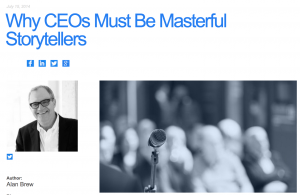Every episode of Mr. Rogers’ Neighborhood began with a pan of the town, followed by a zoom into Mr. Rogers’ house.
You saw the traffic light blinking yellow. Then Mr. Roger’s walked in the door, changed into his famous sweater and sneakers and welcomed you into the day’s story.
Downton Abbey does this too. The Earl and yellow labrador walk toward Highclere Castle as the theme song summons you into its world.
The 1980s show, Cheers, excelled at this. Sometimes you want to go where everybody knows your name.
But I’m not talking about theme songs here. I’m talking about story signals.
If you have kids, you’ve suffered through numerous shows like Dora the Explorer or Barney in which each episode is essentially the same.
However, these shows are designed with formulaic story signals, because children are drawn in by the familiarity.
We are too.
Stories thrive when effective rituals and motifs are present and persistent.
Mr. Roger’s song and sweater are trust signals. They invite you in.
Downton’s opening signals sophistication and drama.
Podcasts try to do this with canned intro music and hosts donning DJ voices.
How are you building orienting signals into your story?
How are you fostering the familiar with your clients?
What are your story signals?
I’m trying to do this with daily story prompts like this one. I’m also trying to do this with design and presentation elements.
It’s a work in progress. The important thing is that you become aware of story signals so you can use them to grow your company, cause or career.





